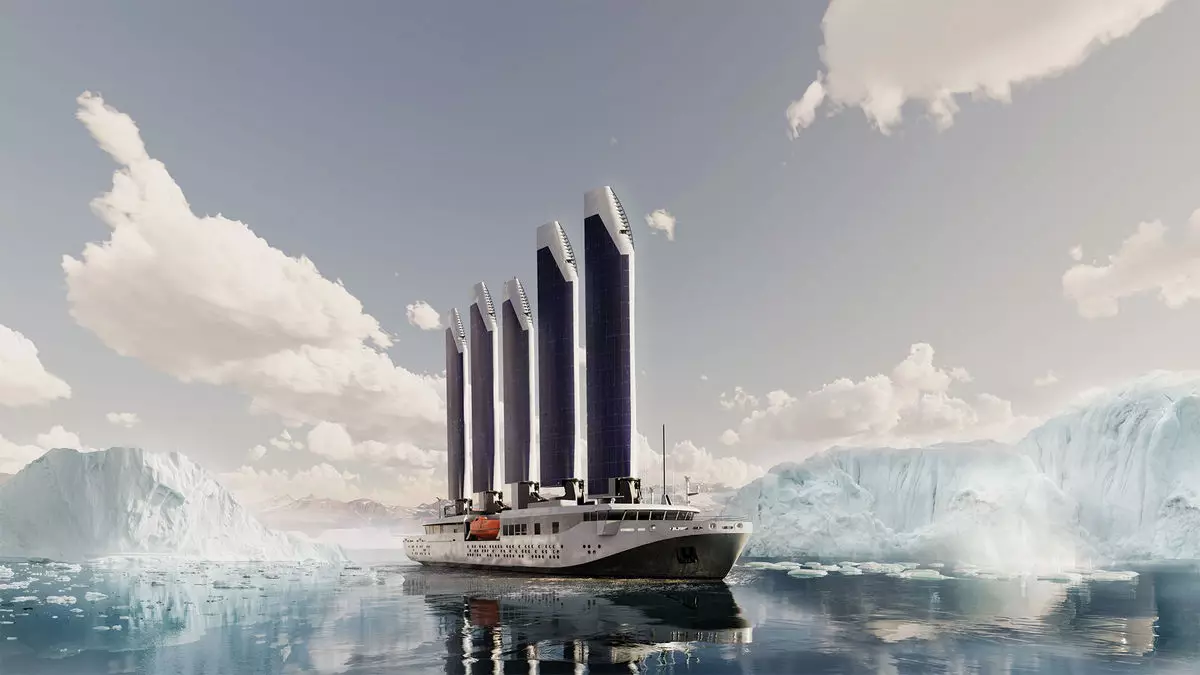The cruise industry is on the precipice of a significant transformation, with expedition lines taking the lead on sustainability initiatives. While these companies are making commendable progress towards eco-friendly operations, the challenge remains: how to balance these efforts with consumer pricing sensitivities. It is an undeniable truth that the market for expedition cruises is exceptionally competitive, and there’s an apparent hesitation among operators to impose higher costs on their eco-conscious offerings. Leaders in the industry assert that committing to sustainability isn’t just an ethical stance; it is also becoming a pivotal business strategy that can pay off in the long run.
A candid observation by Ashton Palmer, the president of Expedition Trips, reflects the cautionary stance many executives take regarding the economic viability of sustainability premiums. Even though bigger players like Ponant are financially equipped to innovate without relying solely on profitability, most firms in the sector remain skeptical about customers’ willingness to pay more for eco-friendly options. The underlying sentiment is that while consumers express a desire for sustainability, their reluctance to pay additional fees indicates a fundamental gap between expectations and consumer behavior.
The Dichotomy of Desire and Action
The recent discussions among cruise executives reveal an intriguing paradox: consumers desire sustainable travel, yet their actions often tell a different story. Ponant CEO Samuel Chamberlain cleverly compared current consumer behavior regarding sustainability in cruising to what we see in the airline industry, where few passengers opt for extra charges to offset emissions. This dichotomy highlights the fact that, despite market demands for green practices, actual consumer commitment still lags behind, further complicating the landscape for expedition cruise companies.
Taking a closer look at customer motivations, it becomes evident that price sensitivity significantly influences decision-making. Claire Maguire from Cruise Planners underscores how her clients prioritize package inclusivity over sustainability considerations when selecting a cruise line. This may sound disheartening, but it forces companies to innovate and rethink how they communicate their sustainability initiatives; they must package these efforts as not just environmentally responsible, but as essential selling points that justify their value.
Long-Term Investments for Sustainable Legacies
Why, then, are expedition lines investing heavily in sustainable technologies and practices? The answer is multifaceted. For companies like Hurtigruten, with a 130-year legacy along Norway’s rugged coasts, sustainability is intertwined with their operational continuity. Their COO acknowledges that ensuring the preservation of delicate ecosystems isn’t merely ethical; it is an investment in the very future of their business. Efficiency through sustainability serves a dual purpose: reducing operational costs while also safeguarding their rich maritime heritage.
The financial implications of reducing emissions are noteworthy. Such initiatives can lead to decreased fuel consumption—a necessity in a world where fuel costs continue to rise. As Hurtigruten aptly points out, a significant initial expenditure on sustainable technology can yield substantial savings that echo through the lifespan of the vessels. In a sector where fuel efficiency is paramount, companies that prioritize sustainability can indeed achieve a competitive edge.
Advent of New Green Players
A glimpse into the future reveals fresh players like Selar, which promise to push the envelope even further. With an ethos centered around minimal environmental impact, Selar’s upcoming ship will harness wind and solar energy, occasionally utilizing biofuels when absolutely necessary. Their flexible, real-time itinerary approach specifically caters to an eco-conscious clientele craving unique maritime experiences while lessening their carbon footprint.
Yet, this does not eliminate the overarching trend: while customers of high-end expedition lines are often passionate about the environment, their primary focus is frequently on the experiential value. As Selar’s co-founder Sophie Galvagnon puts it, the obligation to uphold sustainable practices should not equate to elevated costs for clients; it is an intrinsic responsibility every company must embrace.
Consumer Choices and Ethical Travel
Understanding the deeper layers of consumer psychology is critical for expedition cruise companies. Travelers embarking on once-in-a-lifetime journeys often grapple with the notion of ethical travel. Visitors to pristine locales like Antarctica, who may have previously shied away from cruising due to sustainability concerns, are often reassured by the knowledge that their chosen expedition line employs responsible practices, such as minimizing food waste and eliminating single-use plastics.
Advisors like Gari Senderoff recognize the emotional weight that sustainability holds for these passengers. Their desire to enjoy a fulfilling experience without a lingering sense of guilt shapes their cruise preferences, albeit without seeming to directly translate into a willingness to pay more. As companies strive to create memorable journeys, finding ways to communicate their commitment to sustainability may enhance the overall appeal to conscious travelers.
Though the expedition cruise sector is still in the early stages of fully realizing its sustainability potential, the current journey suggests a promising path forward. Balancing consumer expectations with ecological responsibility may seem daunting, yet it remains vital for these companies to continue leading with innovative, transparent practices that resonate with the environmentally minded traveler.


Leave a Reply